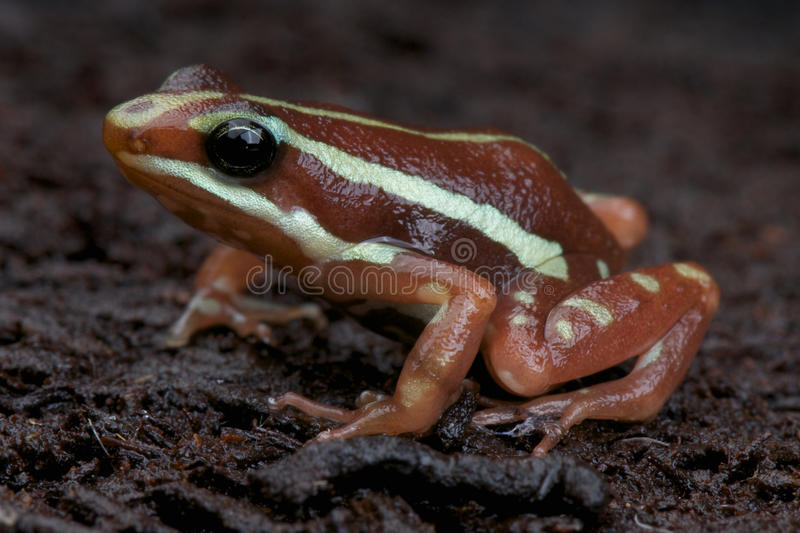ANIMAL: Anthony’s Poison Arrow Frog Epipedobates anthonyi Type of Animal: Frog Habitat: Forests, moist lowland areas near streams Location(s): SW Ecuador & NW Peru Appearance: Very small frog, bright reddish to dark reddish to reddish-brownish w/ green to yellowish-white striping/spotting, short/robust hind legs, females larger than males Food/Diet: Ants, beetles, termites, mites, flies, crickets, springtails, isopods, spiders Status in Wild: Stable Conservation: Breeding in zoos, aquariums, & herpetoculture Lifestyle: Groups of 3-8 frogs Additional Info: Called: Male Female Young: Tadpole Group: Army Weight: Male: 0.10-0.11 oz Female: 0.2 oz Gestation: 2 weeks Life Span: 5-8 years Body Length: Male: 0.7 in Female: 1 in Due to skin toxins, only a few snakes successfully eat them. Also called Anthony’s Poison Dart Frogs. Active during the day (diurnal). Females lay clutches of 10-40 eggs w/ male guarding them until they hatch 2 weeks later. When tadpoles hatch, male carries them to water body where they stay until metamorphosing into froglets 2 months later. They stay in froglet stage until reaching maturity at 5 months old. Coloration serves as warning to potential predators. Males make trilling calls & croaks. Capture prey using sticky tongue. Like all Poison Frogs, they have good eyesight. Fights usually involve wrestling & don’t result in much injury. Stable but declining due to pet trade, restricted range, pollution, & collection for medicinal use. Fun Fact(s): Hunters use skin toxins on darts/arrows. While poisonous in wild, they lose much/all toxicity in captivity due to diet. In captivity, they’re only fed nontoxic prey items like crickets & fruit flies. In wild, they eat lots of poisonous insects. Toxic nicotine-like substance Epibatidine 1st derived from & named for this species. Once investigated for possible use as analgesic agent but proved too toxic & used exclusively for research purposes. Named after Harold Elmer Anthony, Curator of Mammals at American Museum of Natural History from 1926-1958.
